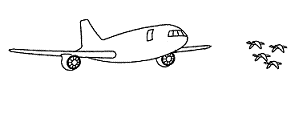Bird Strike Committee Proceedings

Bird Strike Committee-USA/Canada Joint Annual Meeting: 2nd (2000)
Date of this Version
8-8-2000
Document Type
Article
Abstract
Analysis of strike data is critical to determine the true economic costs of bird strikes, determine the magnitude of safety issues, and develop preventive measures. Analysis of USAF bird-strike data identified trends and indicated suggested relationships among factors contributing to damaging strikes. From FY 1988 through FY 1997, the annual mean was 2,668 bird strikes with peaks evident in fall and spring. Daylight and dusk were hazardous for bird strikes. More bird strikes occurred during airfield operations and when aircraft were operating at low altitudes (and when soaring birds were more numerous). Aircraft speed, phase of flight, taxonomic group, bird mass and aircraft group were the strongest predictors of damaging bird strikes. Bird strike rates were calculated for USAF aircraft. Bomber aircraft had the highest strike rate; these aircraft frequently fly long missions at low altitudes where they are likely to encounter birds. The analyses indicated that factors contributing to USAF bird strikes overlap and interact. The study allows recommendations for improving reporting of bird strikes and data management as well as make recommendations for airfield management. Results will enable USAF to better focus research on preventing bird strikes, and assess the effectiveness of bird management programs.

